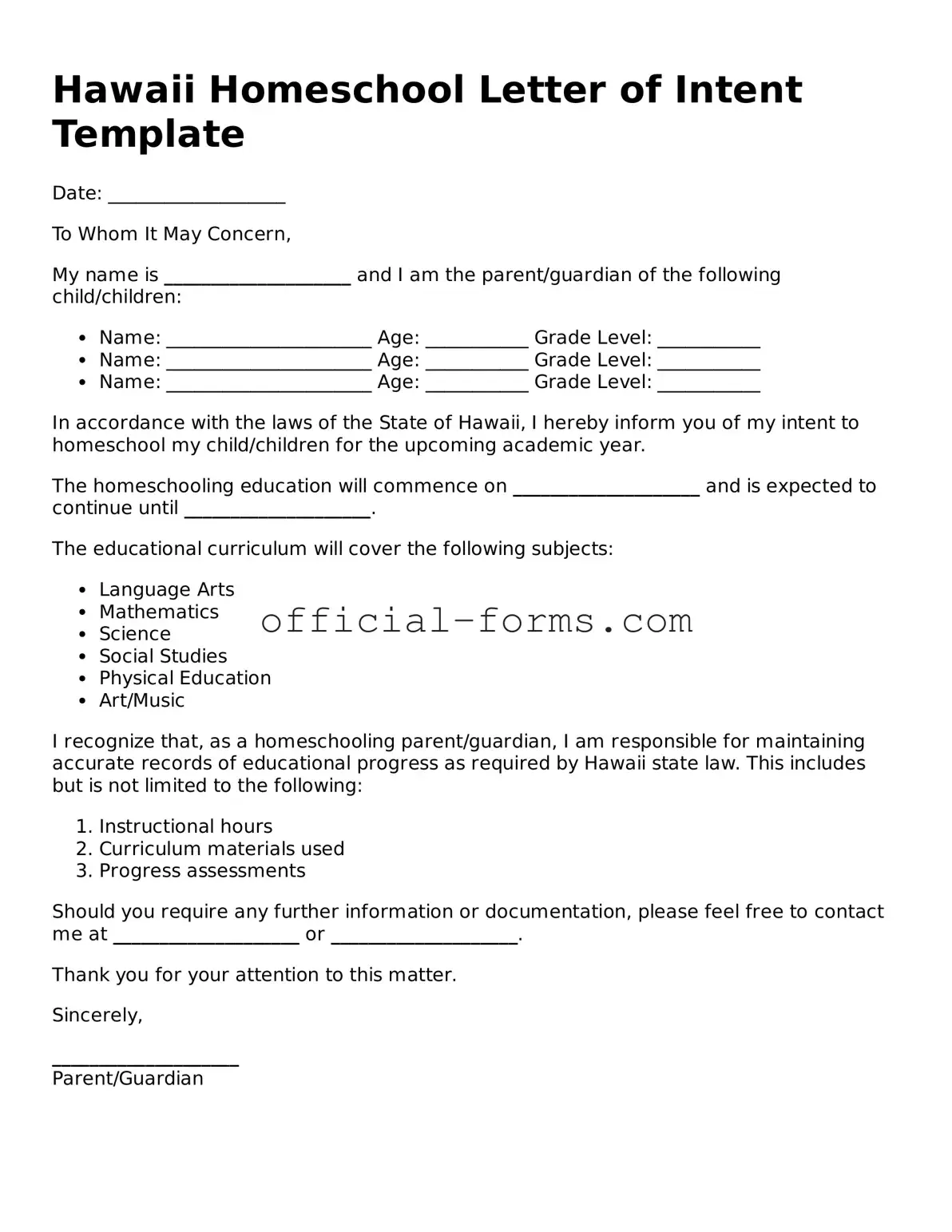Official Hawaii Homeschool Letter of Intent Document
The Hawaii Homeschool Letter of Intent form is a crucial document for families choosing to educate their children at home. This form notifies the state of your intent to homeschool and outlines your educational plans. Submitting this letter is an important step in ensuring compliance with Hawaii's homeschooling regulations.
Open My Homeschool Letter of Intent Now
